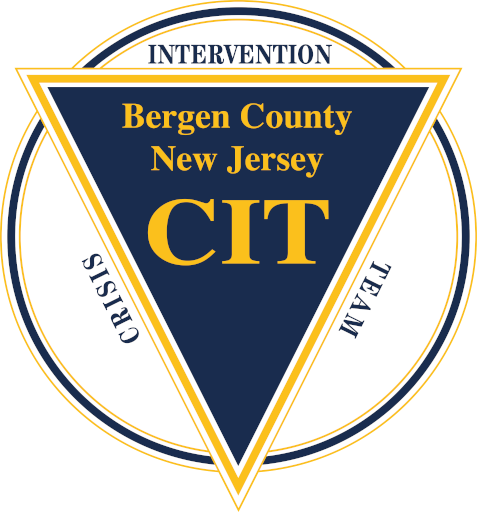What is Oxycontin?
Oxycontin is a strong opioid pain medication that is used to treat severe pain. Oxycontin is one of the brand names for Oxycodone.
Oxycontin can be used as a tablet or in liquid form. It is an opioid, which means it has similar effects as other drugs like morphine and heroin.
Oxycontin is a long-acting (extended-release) opioid pain medication that can put one at risk for:
- Substance abuse
- Opioid addiction
- Opioid overdose
Oxycontin is most often prescribed when other opiate medications that are immediate release opioid prescription drugs have not worked in treating the severity of pain.
Opioid medications in general can effect a persons digestive tract. When immediate release prescribed opioids affect a person via allergy, stomach issues, or even psychologically, Oxycontin may be an alternative.
Is Oxycontin a Strong Medication?
Oxycontin is one of the most powerful drugs used for the relief of severe pain. There are side effects to consider before taking oxycontin.
Oxycontin Side Effects

Some patients can develop severe hypotension when taking Oxycontin. Patients with severe cardiovascular disease and that are taking CNS depressant medications should avoid using oxycontin.
Taking Oxycontin with alcohol may worsen existing hypertension.
Common side effects of Oxycontin include:
- Chills
- Cold sweats
- Difficult or labored breathing
- Fever
- Confusion
- Tightness in the chest
- Respiratory depression
- Twitching
- Dizziness, lightheadedness or faintness when getting up suddenly from a lying or sitting position
Rare side effects of Oxycontin include:
- Burning while urinating burning
- Bloating or swelling of the face, arms, hands, lower legs, or feet
- Blood in the urine
- Chest pain
- Difficult or painful urination
- Cough
- Dizziness
- Decrease in the frequency of urination
- Decreased urine output
- Difficulty with swallowing
- Respiratory depression
- Difficulty in passing urine (dribbling)
- Finding it difficult to swallow
Oxycontin use can also cause high blood pressure and can cause syncope (fainting or passing out). Therefore, it is essential to consult your physician or seek emergency medical assistance if you are suffering from any of these side effects.
Opioid Therapy
Drug abuse and drug interactions are imperative to stay aware and in front of when needing opioid therapy. An opioid overdose can be prevented with consistency and awareness.
Immediate release Oxycodone such as Roxicodone and Percolone are immediate release oxycodone brand names. Immediate release Oxycodone is used for the treatment of acute pain.
Breakthrough pain also known as acute pain comes on fast and can be felt intermittently.
Missed dose of Oxycontin – What Happens?
Skip any missed dose if it is almost time for your next dose. Do not double up on doses. Take one dose at a time.
Most who are on an opioid therapy and prescribed Oxycontin for pain are not likely to miss a dose.
Withdrawal Symptoms
Depending on how long a person has been taking oxycontin, symptoms of withdrawal can be mild to severe. Withdrawal from Oxycontin can be uncomfortable rarely are life threatening withdrawal symptoms.
The biggest risk of withdrawal is from trying to resume the use of Oxycontin at an original dose before withdrawal is completed.
If someone has been on Oxycontin for more than a week, they can experience symptoms of withdrawal if trying to stop.
These symptoms are similar to those that occur when someone stops taking heroin or methadone.
Detoxification
A detoxification program can help people detox from Oxycontin and manage the withdrawal.
If someone is a chronic user of Oxycontin, quitting is not an easy task. The drug alters the brain chemistry, so stopping suddenly can be dangerous.
Detoxification will require a physician to understand the amounts of alcohol, other drugs such as muscle relaxants as well as all prescribed opioids and illicit drugs a person is taking to determine the level of care needed.
To prevent an oxycodone overdose immediate release medications will be examined.
Seek Emergency Medical Help
It essential to seek emergency medical help if life threatening withdrawal symptoms are occurring such as difficulty swallowing, swelling, or the inability to urinate.
Adverse Reactions and Other Opioid Analgesics
Oxycontin may increase the risk of serious adverse reactions such as those observed with other opioid analgesics.
It is important to inform your doctor if you have ever had: breathing problems, respiratory depression, sleep apnea, a head injury, seizures, drug or alcohol addiction, or mental illness.
Is Oxycontin an Opioid?
Yes, Oxycontin is an opioid medication. Oxycontin and Oxycodone are a group of medications called opioid (narcotic) analgesics.
Categories of opioids include:
Often referred to as prescribed opioids, opioid analgesics have been used to treat pain.
Natural Opioids
Some natural opioids include Codeine and Morphine.
Semi-synthetic Opioids
Including drugs such as Oxycodone, Hydromorphone, Oxymorphone and Hydrocodone.
Synthetic Opioids
Including drugs such as Methadone, Tramadol and Fentanyl.
Oxycontin and Oxycodone
Oxycontin is the extended-release form of oxycodone. Oxycodone is an immediate release drug. Oxycontin is the only brand that the extended release drug comes in.
Oxycontin and immediate-release oxycodone both bind to the receptors in your spinal cord and brain. When this occurs it begins to block the pain signals in the brain, which results in pain relief.
Sustained-release Prescribed Opioids
Controlled release oxycodone are sustained-release prescribed opioids. CR oxycodone is similar to morphine and other opioids in its abuse potential.
Food and Drug Administration
Due to the lawsuits with drug companies, oxycontin is heavily monitored by the Food and Drug Administration.
Opioid Analgesic Risk Evaluation and Mitigation Strategy (REMS):
To ensure that the benefits of opioids outweigh the risks of opioid addiction, drug abuse, and misuse, the Food and Drug Administration (FDA) has required a REMS for oxycontin and opioid analgesic medication.
Under the requirements of the REMS, drug companies with approved opioid analgesic products must make REMS-compliant education programs available to healthcare providers.
Discontinue Oxycontin
Discontinue Oxycontin if serotonin syndrome is suspected.
Mental illness and psychiatric disorders at times require prescription drugs to help a person live with their diagnosis.
Serotonin Syndrome
Serotonin syndrome is a serious drug reaction caused by high levels of serotonin in the body.
Serotonin syndrome is most often caused by combining medications that contain serotonin, such as an antidepressant or migraine medication.
Serotonin and norepinephrine reuptake inhibitors (SNRIs), and tricyclic antidepressants (TCAs), are types of drugs that affect the serotonin neurotransmitter system. Medications such as Mirtazapine, Trazodone, Tramadol are but a few monoamine oxidase (MAO) inhibitors intended to treat psychiatric disorders.
Severe serotonin syndrome can cause death if not treated.
Is Oxycontin Illegal?
Yes if prescribed by a doctor. Oxycontin is often abused and it is illegal to abuse oxycontin.
Opioid Analgesics
Oxycontin is a Schedule II substance under the Controlled Substances Act. Oxycodone belongs to a class of drugs known as opioid analgesics.
Legitimate prescriptions for Oxycontin does not stop drug abuse. Unfortunately, oxycontin is sometimes obtained under false circumstances. Both the Food and Drug Administration (FDA) and the Substance Abuse and Mental Health Services Administration (SAMHSA) are committed to addressing the opiate epidemic.
Drug Abuse and Mental Illness
Oxycontin has been controversial because of its drug abuse potential. There have been several high-profile fatal overdose deaths and celebrity and drug-dealing doctors linked to oxycontin.
The negative perception of Oxycontin has affected the legitimate use of the drug. Some health care providers refuse to write prescriptions for Oxycontin for fear of it being misused.
Tolerance and Physical Dependence
Tolerance and physical dependence can develop during chronic opioid therapy.
Tolerance is the need for increasing doses of opioids to maintain a defined effect.
Physical dependence happens when stopping will cause symptoms of withdrawal.
Opioid Addiction
Many people who abuse Oxycontin and oxycodone begin using it with a prescription from a doctor — but as the body begins to develop a tolerance to the drug, a higher dose is needed to maintain the same feeling of relief.
The transition from opioid abuse to addiction can be dangerous and quick. Oxycontin and oxycodone are powerful drugs and offers much-needed euphoria to many people struggling with pain or terminal illness, which results in the abuse and addiction.
Signs of Addiction
- Taking more of the drug than prescribed
- Financial struggles due to drug use
- Endangering yourself or others
- Looking to the drug for relief on bad days
- Allowing relationships and health to deteriorate
- Feeling “off” when not using the drug
- Feeling intense euphoria during drug use
- Experiencing symptoms of withdrawal
- Needing more of the drug to achieve a high
- Craving the drug when not under its influence
- Prioritizing drug use above all else
Opioid Overdose
Taking broken, crushed, chewed, or dissolved extended-release oxycodone could cause a fatal overdose. An oxycodone overdose can be fatal, especially in a child or other person using the medicine without a prescription. Overdose symptoms may include severe drowsiness, pinpoint pupils, slow breathing, or respiratory depression.
Using Oxycontin or oxycodone in combination with selective serotonin reuptake inhibitors (SSRI’s) may cause fatal drug interactions including overdose. This could warrant immediate emergency medical help.
Treatment at CarePlus New Jersey
CarePlus NJ is dedicated to excellence in mental health care, addiction treatment and social support services. Our addiction recovery services offers a comprehensive range of services that start with an evaluation to guide you to the most appropriate level of care.
Support Team for Addiction Recovery
The Support Team for Addiction Recovery (STAR) program provides case management and peer recovery support to individuals coping with opioid use disorders in New Jersey.
The program was developed to address drug abuse and the high rates of recidivism and relapse among individuals who cycle in and out of treatment for opioid use disorders.
CarePlus NJ offers this grant-funded program in Morris, Passaic and Warren counties.

Narcotic Analgesics
Narcotic analgesics are drugs that reduce pain. There are two types of narcotic analgesics: opiates and non-opiates. Opiates work by binding to receptors in the brain called opioid receptors.
These receptors, when activated, create a sensation of euphoria or well-being, which reduces the perception of pain and provides relief from emotional distress.
Non-opiates work by binding to receptors in the brain called acetylcholine receptors. These receptors, when activated, block the transmission of signals from nerve endings to the brain and provide relief from pain by reducing inflammation in the body.

Morphine
Morphine is a powerful opioid that is used to alleviate pain and suppress cough or to manage pain after surgery when someone cannot take other medications. It can be taken as an injection or as a pill by mouth.
People with acute asthma may be given morphine by mouth or nebulizer (a machine that converts liquid medicine into a fine mist) in the emergency room.
Side effects of morphine include nausea, vomiting, constipation, itching, dry mouth and confusion. Serious side effects include slowed breathing and low blood pressure which may result in fainting or dizziness when standing.

Dilaudid
Dilaudid is an opioid medication used to treat pain. It is a semi-synthetic opioid that is structurally similar to morphine.
It is usually given intravenously, intramuscularly or orally. Dialaudid was developed in the 1950s by medical researchers at Knoll Pharmaceutical Company and has been on the market since 1961.
Dilaudid’s main component, hydromorphone, binds to opioid receptors in the brain and spinal cord, which decreases the perception of and response to pain. Dilaudid also causes drowsiness, which can lead to dizziness or lightheadedness when moving from a sitting or lying position.

Actiq
Actiq is an opioid and should not be used for the treatment of chronic pain. It is only appropriate for short-term relief of extreme pain. Actiq (fentanyl) is a strong opioid medication prescribed to treat breakthrough pain in cancer patients who are already taking other opioids for their chronic pain.
Actiq comes in the form of a small lollipop which dissolves on the tongue and can be used as needed for short periods of time (usually 1-2 hours). It is also available as a lozenge that can be dissolved in the mouth or placed under the tongue, or as an injection given by your doctor.

CarePlus NJ, INC. is dedicated to excellence in mental healthcare and has a commitment to life-long support needed by individuals and their families to ensure that they achieve their full potential and improve the quality of their lives.









